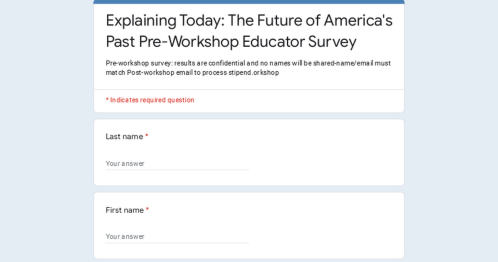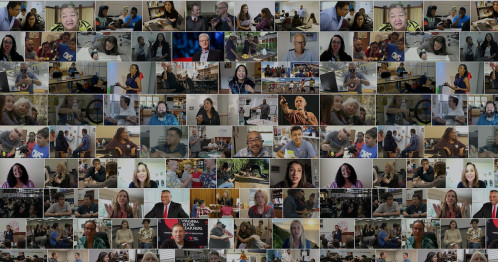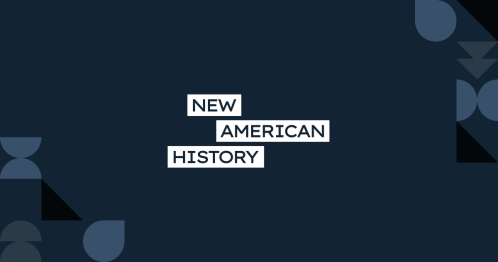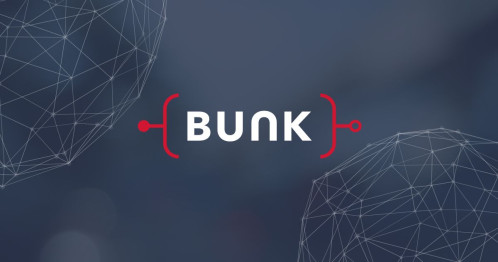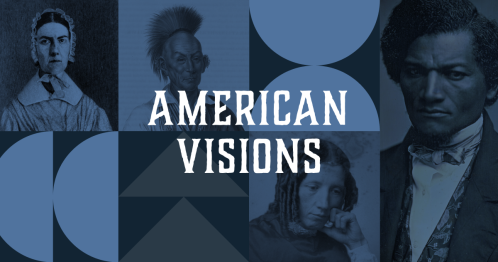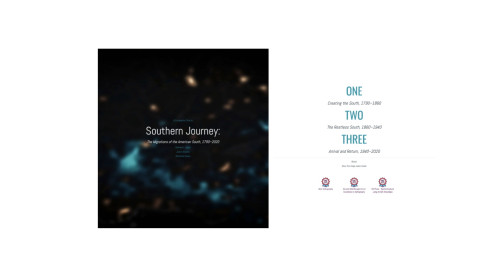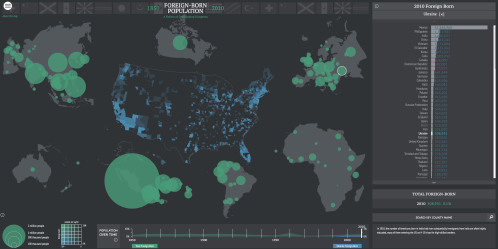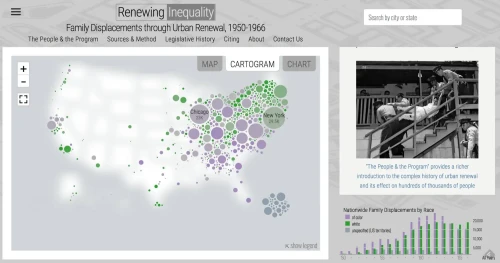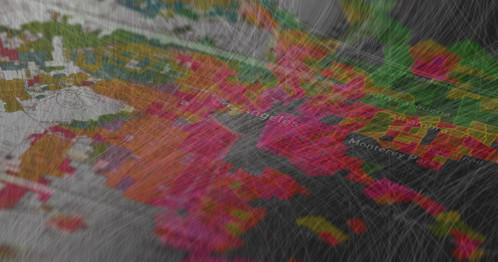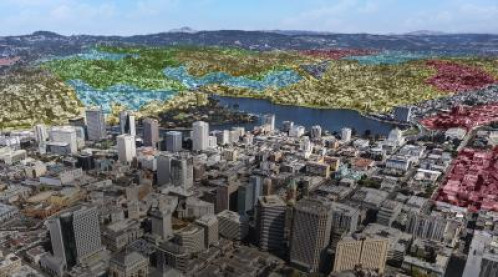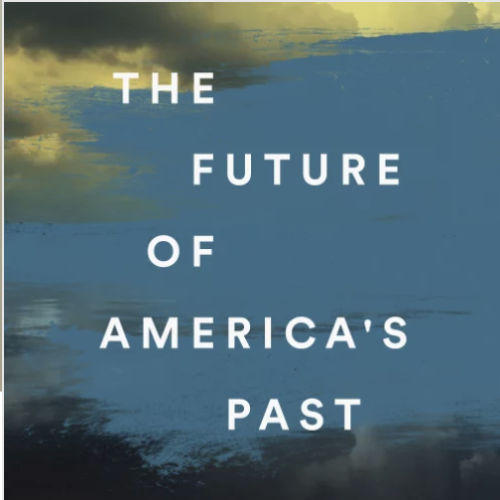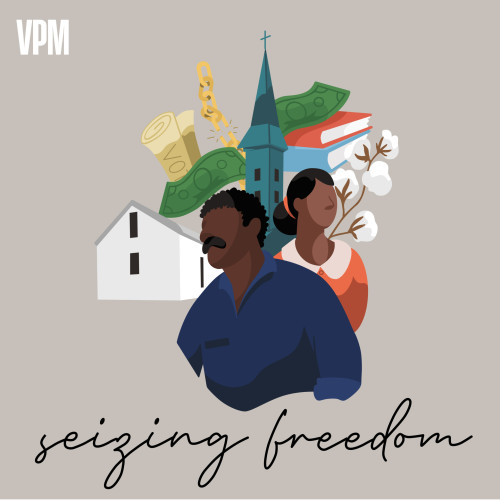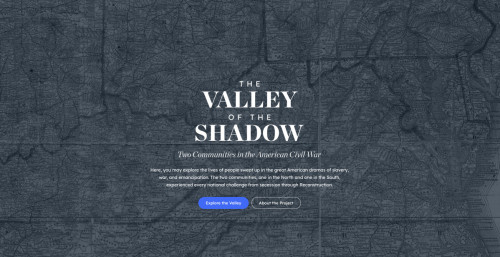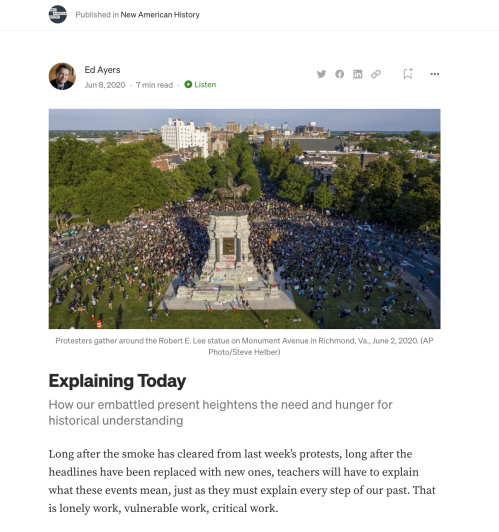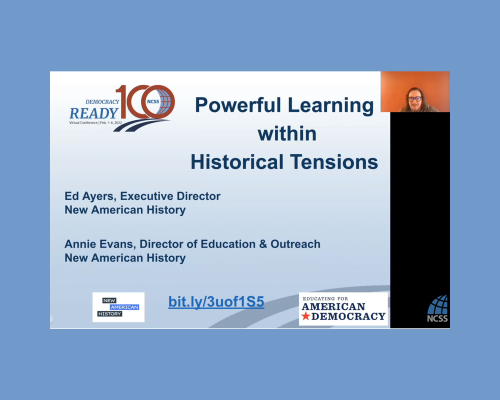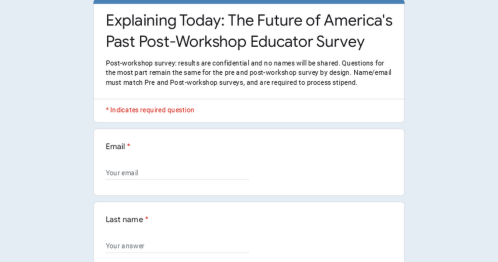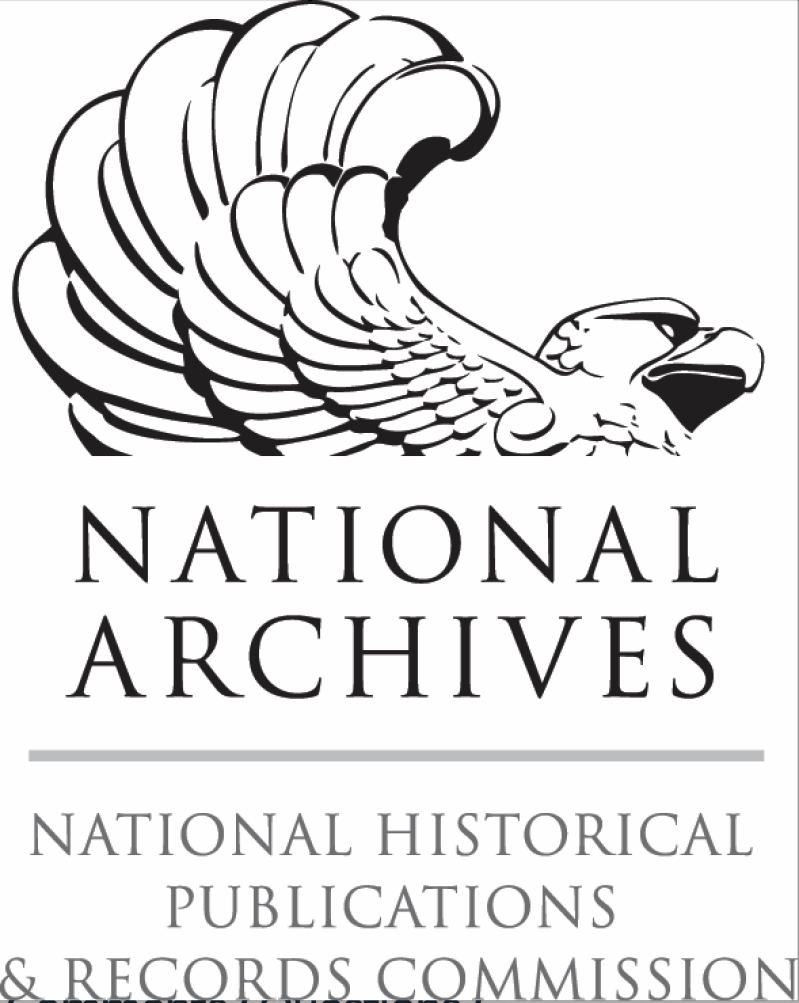This work by New American History is licensed under a Attribution-NonCommercial-ShareAlike 4.0 (CC BY-NC-SA 4.0) International License. Permissions beyond the scope of this license may be available at newamericanhistory.org.
Explaining Today: The Future of America's Past
New American History
Visit New American History for access to engaging tools and resources, including our growing Learning Resources library.
Our Community Platform
Our community platform is hosted by What School Could Be. Please sign up to be a part of this free learning community, then look for an invitation to join our private group to share resources and exchange ideas with educators across the country.
Accept the Community invite using the following link:
Learning Resources:
The following learning resources were created by K16 educators in collaboration with New American History and Field Studio. Resources were also vetted by our colleagues at the American Historical Association, in collaboration with the National Council for Social Studies, and the John N. Gardner Institute for Experience in Undergraduate Education. This work by New American History is licensed under an Attribution-NonCommercial-ShareAlike 4.0 (CC BY-NC-SA 4.0) International License. Permissions beyond the scope of this license may be available at newamericanhistory.org or by contacting editor@newamericanhistory.org.
Rapid Response Shorts
Season One
Season Two
- The Revolutions
- Red Chicago - coming soon!
- Transcontinental
- School Interrupted
Additional Learning Resources - State Specific
Georgia
- Monuments, Markers, and Memorials
- WEB du Bois and Negro Citizenship
- Cotton Mills (in production)
Indiana
Ohio
New York
- Graphic History of Hip Hop
- Kendrick Knows
- This Beautiful, Ridiculous City
- Maria Stewart
- Hudson River School
- Finding Edna Lewis (in production)
Alabama
Please explore our full suite of tools and resources available for classroom use from New American History.
Bunk
History rewired...from New American History and the University of Richmond
Bunk is a shared home for the web’s most interesting writing and thinking about the American past. Join us to explore the multi-dimensional connections between past and present. Check out our new Bunk mapping tool to view history in place. Explore Bunk exhibits, share an interesting connection, or curate and annotate your own Bunk Collections!
American Visions: The United States, 1800-1860
There’s more to every story, and the making of America is no exception. Visions for a more perfect union—often originating from the margins of society—continue to shape our nation in profound ways. These original voices are resurfaced in the book American Visions and brought to life through short films, original sources, and visits to the places where history unfolded.
American Visions - a companion site
Maps
Visualizing the past with New American History and American Panorama, in collaboration with the Digital Scholarship Lab at the University of Richmond
The map shows where nearly a million enslaved people were moved from and where they were moved to through the American slave trade and the migration of planters from 1810 to 1860. Based on Census data, the map employs the use of data visualizations, timelines, and powerful narratives of the enslaved to help students understand both the economic and human history across decades of forced migration.
Taking a wide focus, Southern Journey narrates the evolution of southern history from the founding of the nation to the present day by focusing on the settling, unsettling, and resettling of the South. Using migration as the dominant theme of southern history and including indigenous, white, black, and immigrant people in the story, author Edward L. Ayers cuts across the usual geographic, thematic, and chronological boundaries that subdivide southern history. Using StoryMaps to combine text, interactive maps, and other multimedia content for storytelling enhances the original text for classroom inquiries.
At all points in its history, a significant proportion of the population of the United States had been born in other countries and regions. This being the case, American history can never be understood by just looking within its borders. The culture and politics of the US have always been profoundly shaped by the material and emotional ties many of its residents have had to the places where they were born. This map will allow you to begin to explore those connections at the basic level of demographic statistics.
Redlining is only PART of the story...
Mapping Inequality provides the public with digitized federal government housing documents from more than eighty years ago. This unique collaboration created a foundational resource for unprecedented research, education, organizing, and policy advocacy on redlining and current economic, environmental, and public health challenges.
For a quarter century, the federal government provided funding for cities large and small to raze "blighted" or "slum" neighborhoods. Though improved housing opportunities were the ostensible goal, over time, cities used federal funds to stimulate commercial and industrial redevelopment. Through these programs, cities displaced hundreds of thousands of families from their homes and neighborhoods. Renewing Inequality visualizes those displacements and urban renewal more generally.
Borders and cartography are inherently political and there lies real power in who gets to decide a boundary. This StoryMap illustrates the connection between the original HOLC maps and the world today, using both an environmental and social lens. Comparing maps from the 1930s to today, a series of case studies showcase how redlining maps have perpetuated environmental inequalities, including urban heat, tree coverage, impervious surfaces, urban renewal, and topography. Understanding where inequalities stem from provides a path to help ameliorate the problems today.
There is no better archive of redlining than the HOLC maps and the accompanying area descriptions. This site juxtaposes these maps from the 1930s with contemporary health disparities. In most cities, you will see striking similarities between redlining eighty years ago and health disparities today. This is a testament to the long-lasting impact of racial segregation and redlining in shaping the enduring contours of marked inequality in American cities.
Storytelling through Documentary Film
New American History in collaboration with Field Studio and VPM
Podcasts
New American History, in collaboration with Virginia Humanities and VPM
The program, which featured interviews, free-wheeling conversation, and narrative storytelling, was produced by Virginia Humanities. This archive includes episodes and transcripts from BackStory’s entire 12-year run. Individual segments and enhanced search features including related resources make this archive a classroom-ready resource.
Seizing Freedom is hosted by Kidada Williams, with support from VPM and Executive Producer Ed Ayers. Learning Resources are produced in collaboration with New American History.
Digital Archives, New American History and the University of Richmond, in collaboration with the University of Virginia Library
Here, you may explore the lives of people swept up in the great American dramas of slavery, war, and emancipation. The two communities, one in the North and one in the South, experienced every national challenge from secession through Reconstruction. Learning Resources for using the archives are available from New American History.
Medium
Blog posts from our Executive Director, Historian Ed Ayers, and the New American History team, ready for classroom use, and embedded in Bunk to make historical connections.
Pedagogy
View our New American History presentation at the NCSS 100th Anniversary conference. Executive Director Ed Ayers and Director of Education and Outreach Annie Evans led a discussion on teaching through historical tensions.
Thank you for joining us the past 3 days! Please complete this Post-Workshop survey and be sure to include a mailing address where we may send your stipend. Please stay in touch via email, social media, and/or our What School Could Be Educator Community. We will post upcoming opportunities to engage further with scholars, filmmakers, cartographers, etc. and we look forward to continuing to learn with and from all of you!
This workshop is hosted with generous support from the National Historical Publications &Records Commission


